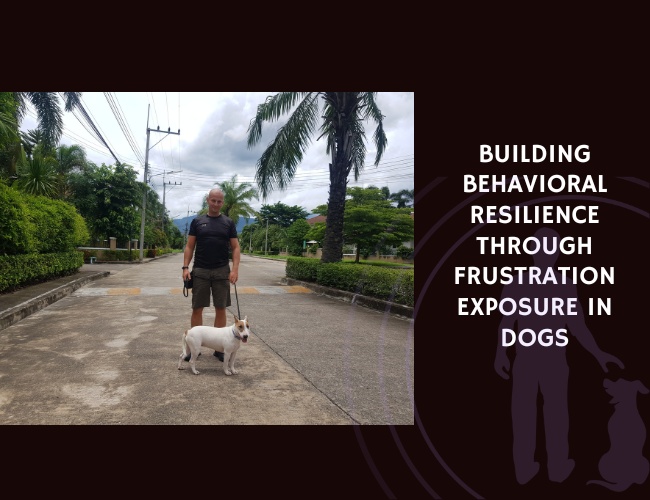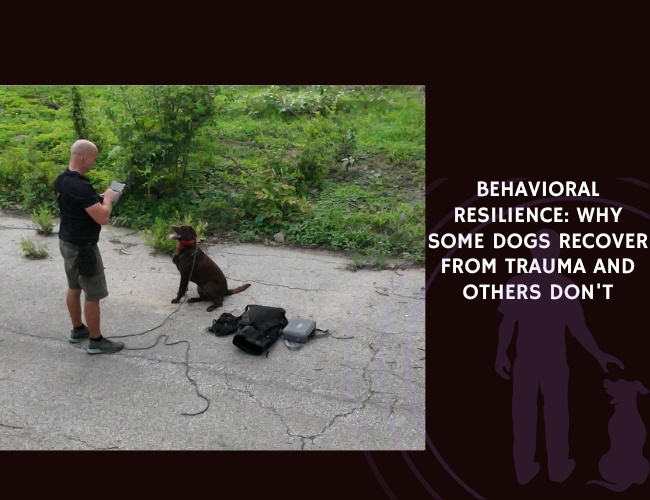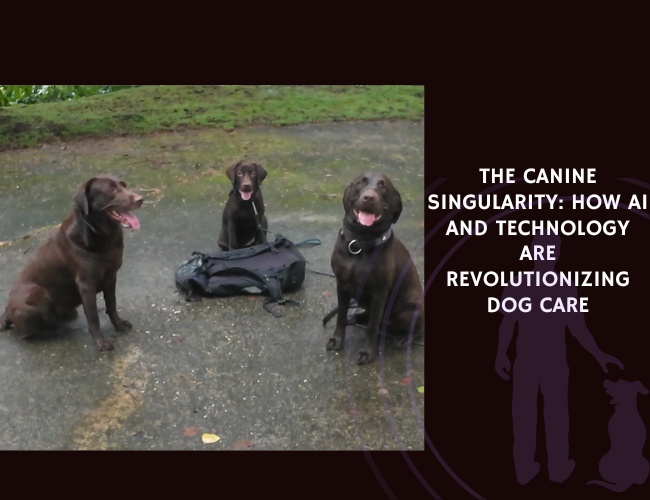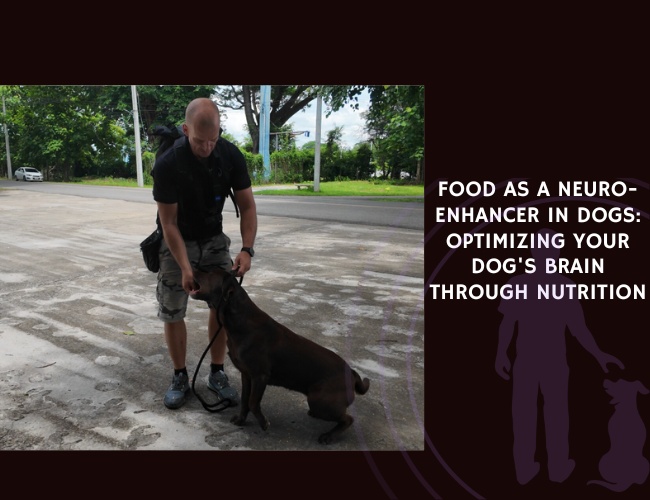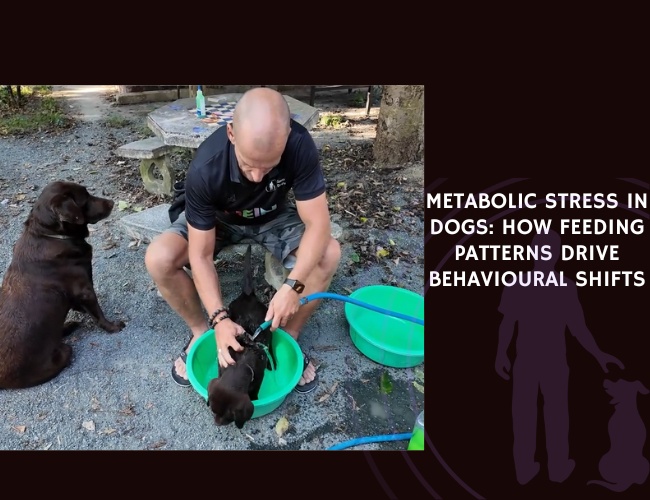Have you ever watched your furry friend struggle with a puzzle toy, only to see them give up in frustration? Or perhaps you’ve noticed how some dogs bounce back quickly from setbacks while others seem to spiral into anxiety? These moments reveal something profound about canine emotional development – and they’re at the heart of a revolutionary approach to raising more resilient, confident dogs.
In this comprehensive guide, we’ll explore the fascinating science of behavioral resilience in dogs and how controlled frustration exposure can transform your companion into a more adaptable, emotionally stable partner. Whether you’re raising a puppy, working with a rescue, or simply wanting to enhance your current dog’s coping skills, let us guide you through this evidence-based approach that’s reshaping how we think about canine emotional wellness.
Understanding Behavioral Resilience in Dogs
What Resilience Really Means for Your Canine Companion
Behavioral resilience in dogs goes far beyond simple obedience or training success. Drawing from comparative psychology and ethology, we can define it as your dog’s capacity to adapt and recover from challenging or stressful situations. Think of it as their emotional immune system – the stronger it is, the better they handle life’s inevitable ups and downs.
Key Components of Canine Resilience:
- Emotional Stability: The ability to maintain calm in varying situations
- Persistence: Continuing to try when faced with challenges
- Recovery Speed: How quickly they bounce back from setbacks
- Adaptability: Adjusting behavior based on changing circumstances
You might notice these traits in everyday situations. A resilient dog encountering a closed door might paw at it, then calmly wait or find another route. A less resilient dog might bark incessantly, scratch destructively, or give up entirely. This difference isn’t about intelligence – it’s about emotional regulation and learned coping strategies.
The Science Behind Measuring Your Dog’s Resilience
Understanding your dog’s current resilience level helps you tailor their development journey. Researchers have identified several measurable indicators that paint a clear picture of canine emotional stability:
Recovery Time Assessment Watch how long it takes your dog to return to baseline after a mildly frustrating event. Does your pup shake off a failed attempt at reaching a toy within seconds, or do they remain agitated for minutes? Research using heart rate variability sensors in shelter dogs has shown that resilient individuals typically show physiological recovery within 30-60 seconds.
Persistence Patterns Time how long your dog continues attempting a challenging task. Resilient dogs often show a “sweet spot” of persistence – they try multiple strategies without becoming overly fixated or quickly defeated. This balanced approach indicates healthy frustration tolerance.
Re-engagement Willingness After a setback, does your dog approach similar challenges with enthusiasm or avoidance? Resilient dogs maintain curiosity and confidence, viewing obstacles as puzzles rather than threats. This mindset difference is crucial for long-term emotional health.
Affective Signal Analysis Your dog’s body language tells a rich story. Tail position, ear orientation, breathing patterns, and facial expressions all provide windows into their emotional state. Modern research even uses specialized cameras to detect micro-expressions that reveal stress levels invisible to the naked eye. 🐾
The Art and Science of Constructive Frustration
Distinguishing Constructive from Overwhelming Challenges
Not all frustration is created equal. Just as controlled exercise builds physical strength, carefully calibrated mental challenges build emotional resilience. The key lies in finding that perfect balance – enough challenge to promote growth without triggering distress.
Constructive Frustration Characteristics:
- Achievable Goals: The dog can succeed with effort
- Clear Pathways: Solutions exist and are discoverable
- Appropriate Duration: Challenges last minutes, not hours
- Supportive Environment: Owner presence provides security
Think of it like teaching a child to tie their shoes. You wouldn’t hand them a complex sailing knot on day one. Similarly, your dog’s frustration training should progress gradually, building confidence alongside capability.
Examples of Effective Frustration-Building Activities
Puzzle Feeders: The Gateway to Resilience Start with simple puzzle feeders where food falls out easily with minimal manipulation. As your dog masters each level, introduce more complex mechanisms. This progression teaches problem-solving while maintaining engagement. The beauty of puzzle feeders lies in their self-reinforcing nature – success literally tastes good!
Barrier Frustration Training Place a favorite toy behind a low, transparent barrier. Your dog can see the reward but must figure out how to navigate around the obstacle. This exercise builds spatial reasoning and patience simultaneously. Begin with barriers your dog can easily step over, gradually increasing height or complexity.
Impulse Control Through Delayed Gratification Teaching your dog to wait before receiving treats or accessing toys builds tremendous emotional strength. Start with one-second delays, praising calm behavior. Gradually extend these periods, always ensuring your dog succeeds more often than not. This isn’t about testing limits – it’s about building confidence in their ability to self-regulate.
Interactive Training Games Hide-and-seek, “find it” games, and nose work activities combine mental stimulation with manageable frustration. These games tap into natural behaviors while teaching persistence. When your dog struggles to locate a hidden treat, they’re learning that continued effort pays off – a lesson that generalizes to other life situations. 🧡
Recognizing and Avoiding Overwhelming Frustration
Overwhelming frustration can undo months of careful resilience building. Learning to recognize the warning signs protects your dog’s emotional wellbeing and maintains their trust in you as their guide.
Red Flags of Excessive Frustration:
- Displacement Behaviors: Excessive yawning, lip licking, or sudden grooming
- Escalating Vocalizations: Whining that becomes barking or howling
- Physical Stress Signals: Panting without physical exertion, trembling
- Behavioral Regression: Returning to puppyhood behaviors like destructive chewing
- Learned Helplessness: Complete disengagement or “shutting down”
When you notice these signs, immediately reduce the challenge level. Success builds resilience; repeated failure breeds anxiety. Your role is to be an attentive coach, adjusting difficulty in real-time based on your dog’s responses.
Long-Term Benefits of Frustration Exposure
How Controlled Challenges Shape Coping Mechanisms
The concept of “stress inoculation” borrowed from human psychology applies beautifully to canine development. Just as vaccines expose the immune system to weakened pathogens, controlled frustration exposure teaches the emotional regulation system to handle challenges without becoming overwhelmed.
Neurological Changes from Resilience Training: Research suggests that repeated, successful navigation of frustrating situations actually changes brain structure. The prefrontal cortex – responsible for executive function and emotional regulation – shows increased activity in resilient dogs. Meanwhile, the amygdala’s fear response becomes more measured and appropriate.
This neuroplasticity means your efforts create lasting change. Each small success literally rewires your dog’s brain for better emotional processing. The puppy who learns to calmly work through a puzzle feeder develops neural pathways that help them remain composed during veterinary exams years later.
Improved Behavioral Flexibility and Adaptability
Resilient dogs demonstrate remarkable behavioral flexibility. Rather than relying on rigid response patterns, they adapt their approach based on circumstances. This flexibility manifests in numerous ways:
Environmental Adaptability Dogs with strong frustration tolerance adjust more easily to new environments. Moving homes, traveling, or encountering novel situations becomes less stressful because they’ve learned that initial confusion gives way to understanding with patience and exploration.
Social Flexibility Resilience training improves social interactions with both humans and other dogs. When play doesn’t go as expected or another dog doesn’t respond to social cues, resilient dogs adjust their approach rather than escalating or withdrawing.
Problem-Solving Creativity Faced with obstacles, resilient dogs try multiple solutions. This creativity extends beyond trained scenarios – they generalize the concept that persistence and experimentation lead to success. You might notice your resilient dog attempting different angles to retrieve a ball from under furniture or varying their communication strategies when seeking attention.
Reducing Reactivity and Preventing Anxiety Disorders
Perhaps the most significant benefit of frustration exposure is its protective effect against anxiety disorders. Dogs who learn early that challenges are temporary and manageable develop a more optimistic worldview – what researchers call a “positive cognitive bias.”
Reactivity Reduction Mechanisms:
- Improved Threat Assessment: Resilient dogs better distinguish between real dangers and minor inconveniences
- Faster Emotional Recovery: Startling events produce appropriate but brief responses
- Reduced Trigger Stacking: Better emotional regulation prevents small stressors from accumulating
- Enhanced Confidence: Success experiences create a “can-do” attitude that buffers against fear
This protective effect is particularly powerful when established during puppyhood but remains beneficial throughout life. Even senior dogs can develop better coping strategies through appropriate frustration exposure. 🐾

Individual Factors in Resilience Development
Breed-Specific Considerations and Predispositions
Your dog’s genetic heritage significantly influences their natural frustration tolerance and the approaches that work best for building resilience. Understanding breed tendencies helps you tailor training to your specific companion’s needs.
High-Persistence Breeds: Terriers, developed for independent hunting, often show natural tenacity. Jack Russell Terriers, for instance, were bred to pursue prey into burrows despite obstacles. This genetic programming means they may need activities that channel their persistence constructively. Without appropriate outlets, their frustration tolerance can manifest as destructive determination.
Sensitive Breeds: Herding breeds like Border Collies and Australian Shepherds often show high environmental sensitivity. While intelligent and trainable, they may become overwhelmed more easily by frustration. These dogs benefit from very gradual exposure with plenty of success opportunities. Their desire to please means they take failure particularly hard.
Independent Thinkers: Breeds like Shiba Inus and Basenjis, with their primitive dog heritage, may show less concern about human approval during frustrating tasks. This independence requires different motivational strategies – often food or prey-drive based rather than praise alone.
Companion Breeds: Dogs bred primarily for companionship, such as Cavalier King Charles Spaniels, may have lower natural frustration tolerance. Their genetic selection for human-focused attention means they may seek help quickly rather than persisting independently. Building resilience in these breeds requires especially supportive, gradual approaches.
Age-Related Developmental Windows
The timing of resilience training profoundly impacts its effectiveness. Different life stages offer unique opportunities and challenges for building frustration tolerance.
Early Puppyhood (8-16 weeks): The Critical Foundation This sensitive period shapes lifelong emotional patterns. Puppies experiencing appropriate challenges during this window develop stronger stress-coping mechanisms. Simple activities like waiting briefly for meals or navigating safe obstacles build foundational resilience. However, overwhelming experiences during this period can create lasting anxiety.
Adolescence (6-18 months): The Rebellion Opportunity Teenage dogs naturally test boundaries, making this an ideal time for structured frustration training. Their increased independence and confidence allow for more complex challenges. This period’s hormonal changes mean patience is essential – progress may seem to disappear temporarily before solidifying.
Adulthood (2-7 years): Refinement and Maintenance Adult dogs have established coping patterns but remain capable of learning new strategies. Frustration training during this period focuses on refining skills and preventing behavioral regression. Adults often handle longer, more complex challenges than puppies or seniors.
Senior Years (7+ years): Gentle Adaptation Older dogs may show decreased frustration tolerance due to cognitive changes or physical discomfort. Resilience work should accommodate these changes while maintaining mental stimulation. Simplified versions of familiar challenges often work best, building on established skills rather than introducing entirely new concepts.
Personality Types and Temperament Matching
Individual personality trumps breed and age in determining the best approach to resilience building. Tools like the Canine Behavioral Assessment and Research Questionnaire (C-BARQ) help identify your dog’s unique temperament profile.
The Confident Explorer These dogs approach new situations with curiosity and optimism. They benefit from progressively challenging tasks and may become bored with overly simple exercises. Push their boundaries while ensuring regular success to maintain their natural confidence.
The Cautious Observer Naturally careful dogs need extra support during frustration training. Build their confidence through many small successes before increasing difficulty. These dogs often become the most resilient once they learn that challenges aren’t threats.
The Social Butterfly Dogs who seek constant human interaction may struggle with independent problem-solving initially. Gradually increase the distance between you and your dog during frustration exercises, teaching them that they can succeed without constant reassurance.
The Intense Focus Type Some dogs become hyperfocused on tasks, potentially escalating frustration when stuck. These individuals benefit from trained “break” cues that encourage stepping back and trying new approaches. Teaching flexibility prevents frustration from becoming obsession. 🧡
Frustration. Focus. Flourishing.
True resilience is built, not born.
Dogs don’t become emotionally stable by accident. They grow through calibrated challenge, guided success, and the steady presence of a human who doesn’t rescue too soon—but never lets them drown.
Frustration, done right, is emotional scaffolding.
Just enough difficulty builds problem-solving skills, impulse control, and recovery speed. Too much shuts dogs down. The art lies in walking the tension line—supporting without solving, witnessing without interrupting.


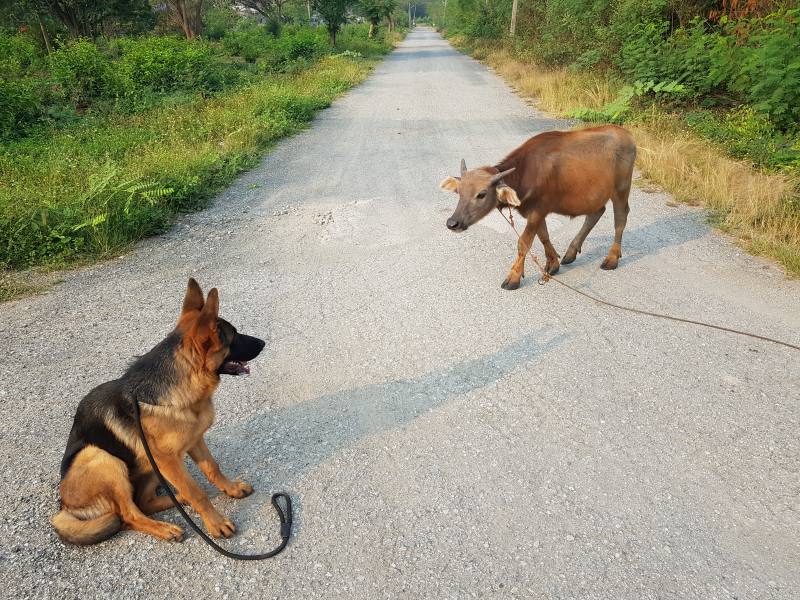
Your dog’s confidence begins in discomfort.
Every barrier puzzle, every delayed reward, every moment they try again rewires how they relate to struggle. What begins with a stuck treat dispenser ends in composure at the vet’s office, patience in chaos, and strength under pressure.
The Owner’s Crucial Role in Building Resilience
Communication Styles That Foster Growth
Your interaction style during frustration training can make or break your dog’s resilience development. The way you communicate – through words, body language, and timing – either supports or undermines their emotional growth.
Effective Communication Strategies:
- Calm Presence: Your relaxed demeanor signals safety during challenges
- Encouraging Tone: Use upbeat but not overly excited vocalizations
- Strategic Silence: Allow processing time without constant chatter
- Clear Markers: Use consistent words or sounds to mark success moments
Think of yourself as a supportive coach rather than a director. Your dog should feel your presence as a safety net, not a crutch. This balance requires reading your individual dog’s needs moment by moment.
The Power of Contingent Praise
Timing transforms praise from noise into powerful reinforcement. Contingent praise – delivered at the exact moment of breakthrough – builds resilience more effectively than random encouragement.
Mastering Praise Timing: When your dog shows calm persistence during frustration, mark that specific behavior. Rather than praising constantly (which can increase arousal) or only at task completion (which might be too late), capture moments of emotional regulation. A quiet “good” when they pause to think, or gentle touch when they take a calming breath, reinforces the coping strategies you want to strengthen.
Avoiding Praise Pitfalls: Over-praising can create praise dependency, where dogs only persist when actively encouraged. Similarly, praising frustrated behaviors accidentally reinforces emotional dysregulation. Watch for calm focus and reward that state specifically.
Setting Boundaries Without Breaking Spirit
Effective boundary-setting provides structure without stifling independence. Your dog needs to understand that some approaches won’t work while maintaining motivation to try alternatives.
Gentle Redirection Techniques:
- Environmental Management: Arrange challenges to naturally guide toward solutions
- Subtle Body Blocking: Position yourself to discourage unproductive strategies
- Alternative Offering: Suggest different approaches through demonstration
- Strategic Breaks: Call timeouts before frustration peaks
Remember, boundaries aren’t punishments. They’re guardrails that keep the learning process productive and emotionally safe. Your dog should feel supported, not restricted.
Common Owner Mistakes and How to Avoid Them
Even well-intentioned owners can inadvertently hinder resilience development. Recognizing these patterns helps you adjust your approach for better outcomes.
Over-Helping: The Helicopter Dog Parent Jumping in too quickly to solve problems robs dogs of learning opportunities. If you always lift your small dog over obstacles or immediately help with puzzle toys, they never develop problem-solving confidence. Practice stepping back and counting to ten before intervening.
Inconsistent Expectations Changing rules mid-challenge confuses dogs and increases frustration. If you sometimes allow jumping for toys but other times require sitting, your dog can’t develop clear strategies. Establish consistent frameworks and stick to them throughout each session.
Emotional Matching When your dog shows frustration, responding with your own anxiety or frustration amplifies their emotional state. Practice remaining calm and centered, especially when your dog struggles. Your emotional stability becomes their anchor.
Comparison Trap Measuring your dog against others – whether littermates, training class peers, or online videos – creates unnecessary pressure. Every dog’s resilience journey is unique. Celebrate small improvements rather than fixating on arbitrary milestones. 🐾

Practical Implementation Strategies
Designing Your Dog’s Resilience Curriculum
Creating a structured approach to frustration exposure ensures consistent progress while preventing overwhelm. Like any educational curriculum, your dog’s resilience program should build systematically on established skills.
Week 1-2: Foundation Building Start with ultra-simple challenges that guarantee success. A treat under a lightweight cup, a toy partially hidden under a blanket, or waiting one second for meals. These exercises establish the concept that persistence pays off without triggering significant frustration.
Week 3-4: Duration Extension Gradually increase the time required for success. If your dog mastered the one-second meal wait, try three seconds. If they quickly found toys under blankets, hide them more thoroughly. Small increments prevent frustration spikes while building stamina.
Week 5-6: Complexity Introduction Add elements that require strategy changes. Introduce puzzle feeders with multiple compartments, or hide toys in boxes with partially closed lids. Your dog learns that initial approaches might not work, but alternatives exist.
Week 7-8: Distraction Resistance Practice frustration exercises with mild environmental distractions. Can your dog work through a puzzle while the cat walks by? This builds real-world resilience where perfect conditions rarely exist.
Ongoing: Maintenance and Advancement Continue introducing novel challenges while revisiting mastered skills. Variety prevents boredom while reinforcement maintains established resilience. Think of it as cross-training for emotional fitness.
Creating Safe Challenge Environments
The physical and emotional environment significantly impacts frustration training success. Thoughtful setup maximizes learning while minimizing stress.
Physical Space Considerations:
- Quiet Initial Training: Start in familiar, low-distraction areas
- Non-Slip Surfaces: Frustration increases if dogs struggle for physical stability
- Appropriate Temperature: Avoid training during temperature extremes
- Clear Boundaries: Define the training space to help dogs focus
- Easy Cleanup: Expect some mess during food-based challenges
Emotional Environment Elements: Your training space should feel safe and supportive. This means consistent routines, predictable session structures, and plenty of success opportunities. Dogs should associate the training area with positive challenges rather than stress.
Monitoring Progress and Adjusting Difficulty
Successful resilience building requires constant calibration. Too easy breeds boredom; too hard creates anxiety. Regular assessment keeps training in the optimal challenge zone.
Progress Indicators to Track:
- Approach Enthusiasm: Does your dog eagerly engage with challenges?
- Strategy Variety: Are they trying different solutions?
- Recovery Speed: How quickly do they bounce back from failed attempts?
- Session Duration: Can they maintain focus for longer periods?
- Generalization: Do skills transfer to novel situations?
Keep a simple log noting these factors after each session. Patterns emerge that guide your difficulty adjustments. If enthusiasm drops, reduce complexity. If every challenge is solved instantly, increase difficulty.
The 80/20 Rule Aim for roughly 80% success rate during training sessions. This ratio maintains confidence while providing enough challenge for growth. If your dog succeeds less than this, simplify. If they never struggle, add complexity.
Integrating Resilience Building into Daily Life
The most effective frustration training happens naturally throughout the day rather than in isolated sessions. Every interaction offers opportunities to build emotional strength.
Mealtime Resilience: Transform boring bowl feeding into resilience training. Scatter feeding, puzzle feeders, or simply moving the bowl to different locations adds manageable challenge. Start with one meal daily, gradually increasing as your dog shows enthusiasm.
Walk-Time Challenges: Use natural obstacles during walks. Let your dog figure out how to navigate around benches or untangle their leash from a post (while supervised for safety). These real-world problem-solving moments build practical resilience.
Play-Based Learning: Incorporate frustration elements into playtime. Hide favorite toys, create obstacle courses, or introduce new game rules. Play’s positive associations help dogs view challenges optimistically.
Grooming and Handling: Basic care routines offer perfect micro-frustration opportunities. Waiting calmly for nail trims, tolerating gentle restraint for brushing, or standing still for collar adjustments all build frustration tolerance in practical contexts. 🧡
Special Considerations and Advanced Applications
Working with Anxious or Traumatized Dogs
Dogs with anxiety histories require modified approaches to frustration training. Their nervous systems already operate on high alert, making traditional challenges potentially counterproductive.
Modified Strategies for Anxious Dogs:
- Micro-Challenges: Break exercises into impossibly small steps
- Predictability Focus: Maintain extremely consistent routines initially
- Choice Provision: Allow dogs to opt out without consequence
- Success Saturation: Ensure 95% success rate initially
- Parallel Learning: Work alongside the dog rather than watching
For traumatized dogs, frustration training becomes rehabilitation. Each tiny success rewrites their narrative from “the world is dangerous” to “I can handle challenges.” Progress may be glacial, but the transformation is profound.
Recognizing Trauma Responses: Traumatized dogs may show extreme reactions to mild frustration. Freezing, dissociation, or panic responses indicate the need for professional intervention. Never push through these reactions – they signal a nervous system overwhelmed beyond learning capacity.
Building Resilience in Multi-Dog Households
Training multiple dogs simultaneously presents unique challenges and opportunities. Dogs learn from watching each other, making group dynamics a powerful tool when used correctly.
Strategies for Multiple Dogs:
- Individual Sessions: Start with separate training to establish baselines
- Peer Modeling: Let confident dogs demonstrate for anxious ones
- Parallel Challenges: Work dogs side-by-side on different tasks
- Turn-Taking: Teach patience while others work through challenges
- Difficulty Matching: Adjust challenges to each dog’s level
Avoid competition between dogs during frustration training. The goal is individual growth, not comparison. Some dogs naturally excel while others struggle – celebrate each dog’s progress independently.
Professional Applications: Service and Therapy Dogs
Professional working dogs require exceptional frustration tolerance. Their jobs involve navigating complex, unpredictable environments while maintaining focus and composure.
Enhanced Training Protocols: Service dog programs increasingly incorporate structured frustration exposure from early puppyhood. Puppies learn that medical equipment might block their path, that they must ignore tempting smells in hospitals, and that their handler’s needs supersede their desires.
Therapy Dog Considerations: Therapy dogs face unique frustrations like unpredictable patient behavior or restrictive hospital environments. Building resilience helps them maintain the calm, gentle demeanor essential for their work. Programs now screen for natural frustration tolerance and build upon it systematically.
Detection Dog Applications: Whether searching for explosives, drugs, or medical conditions, detection dogs must persist despite repeated “misses.” Their training incorporates high levels of frustration exposure, teaching them that continued searching eventually yields success. This persistence can literally save lives.
Preventing and Addressing Frustration-Induced Aggression
Some dogs express frustration through aggressive behaviors. Understanding this connection helps prevent escalation while building healthier coping mechanisms.
Risk Factors for Frustration Aggression:
- Genetic Predisposition: Some lines show lower frustration tolerance
- Early Experience Deficits: Lack of appropriate puppy challenges
- Pain or Discomfort: Physical issues lower frustration threshold
- Resource Competition: History of fighting for resources
- Punishment History: Previous harsh training methods
Dogs showing frustration aggression need specialized approaches. Work with qualified professionals who understand the delicate balance between building resilience and preventing aggressive episodes. Safety always takes precedence over training goals.
Management Strategies: Create larger buffer zones between frustration and aggression. This might mean simpler challenges, shorter sessions, or environmental modifications. Building resilience in aggressive dogs is possible but requires patience and expertise. 🐾
The Future of Canine Resilience Training
Emerging Research and Technologies
The field of canine behavioral resilience is rapidly evolving, with new research constantly refining our understanding. Recent developments promise even more effective approaches to building emotional strength in our dogs.
Technological Advances:
- Biometric Monitoring: Wearable devices tracking heart rate variability and stress hormones in real-time
- AI-Assisted Analysis: Machine learning algorithms detecting subtle stress indicators
- Virtual Reality Training: Controlled exposure to challenging scenarios in safe, virtual environments
- Genetic Testing: Identifying predispositions for resilience or anxiety
These technologies allow unprecedented precision in tailoring frustration training to individual dogs. What once required expert observation can now be quantified and tracked objectively.
Integration with Veterinary Behavioral Medicine
Veterinary behaviorists increasingly recognize frustration tolerance as a key factor in preventing and treating behavioral disorders. This integration is revolutionizing how we approach canine mental health.
Clinical Applications: Veterinary behavioral clinics now incorporate resilience assessments into standard evaluations. Dogs showing early signs of anxiety disorders receive targeted frustration training as preventive intervention. This proactive approach reduces the need for pharmaceutical interventions later.
Collaborative Care Models: The future involves teams including veterinarians, certified trainers, and behavioral consultants working together. Each professional contributes unique expertise to build comprehensive resilience programs tailored to individual dogs and their families.
Implications for Shelter and Rescue Work
Shelters are pioneering innovative approaches to building resilience in homeless dogs. These programs significantly improve adoption success and reduce return rates.
Shelter-Based Resilience Programs:
- Enrichment Protocols: Daily frustration challenges as part of standard care
- Behavioral Assessments: Evaluating frustration tolerance for better matching
- Foster Training: Teaching foster families resilience-building techniques
- Pre-Adoption Preparation: Building coping skills before placement
Dogs leaving shelters with established resilience skills adapt more quickly to adoptive homes. This preparation reduces the stress of transition and prevents many common post-adoption behavioral issues.
Societal Benefits of Resilient Dogs
As more dogs develop strong frustration tolerance, we’re seeing broader societal impacts. Resilient dogs create ripple effects benefiting entire communities.
Community Impacts:
- Reduced Bite Incidents: Frustration-tolerant dogs show fewer aggressive responses
- Enhanced Public Access: Well-regulated dogs are welcome in more spaces
- Decreased Shelter Returns: Resilient dogs adapt better to new homes
- Improved Human Mental Health: Living with emotionally stable dogs reduces owner stress
These benefits make resilience training not just individual dog care but community investment. Every resilient dog contributes to a more harmonious human-animal society.
Conclusion: Your Journey Toward a More Resilient Companion
Building behavioral resilience through frustration exposure is more than a training technique – it’s a philosophy of compassionate challenge that prepares dogs for life’s inevitable obstacles. By understanding the science, respecting individual differences, and implementing thoughtful strategies, you’re giving your dog an invaluable gift: the confidence to face uncertainty with curiosity rather than fear.
Remember, this journey isn’t about creating a “perfect” dog. It’s about nurturing a companion who can navigate our complex world with grace and adaptability. Every small success – every moment your dog chooses persistence over panic – builds toward a lifetime of emotional stability.
Whether you’re starting with a young puppy full of potential or helping an older dog develop new coping strategies, the principles remain the same: appropriate challenges, consistent support, and celebration of progress. Your role as a guide in this process cannot be overstated. Through your patient presence and thoughtful approach, you’re literally reshaping your dog’s neural pathways for resilience.
Is frustration training right for your dog? If you want a companion who approaches life’s challenges with confidence, who recovers quickly from setbacks, and who maintains emotional equilibrium in our often chaotic world, then yes. The investment you make today in building resilience pays dividends throughout your dog’s life – in better veterinary visits, easier travel, harmonious social interactions, and deeper mutual trust.
Start small, stay consistent, and trust the process. Your furry friend’s emotional growth might surprise you. And remember, every dog’s resilience journey is unique. Celebrate your individual dog’s progress, no matter how incremental it might seem.
The path to resilience is paved with patient persistence – both yours and your dog’s. Together, you’re building not just better behavior, but a stronger, more joyful partnership that weathers any storm. Here’s to the journey ahead, filled with growth, discovery, and the deep satisfaction of watching your beloved companion bloom into their most resilient self. 🧡🐾
Further Resources and Next Steps
Ready to begin your dog’s resilience journey? Start with one simple frustration exercise today. Hide a favorite treat under a cup and let your dog figure it out. Notice their approach, celebrate their success, and you’ve taken the first step toward building a more emotionally resilient companion.
For continued learning, consider connecting with certified professionals who specialize in behavioral resilience. The journey is always easier with knowledgeable support. Your dog’s emotional wellbeing is worth the investment, and the benefits will enhance every aspect of your life together.

